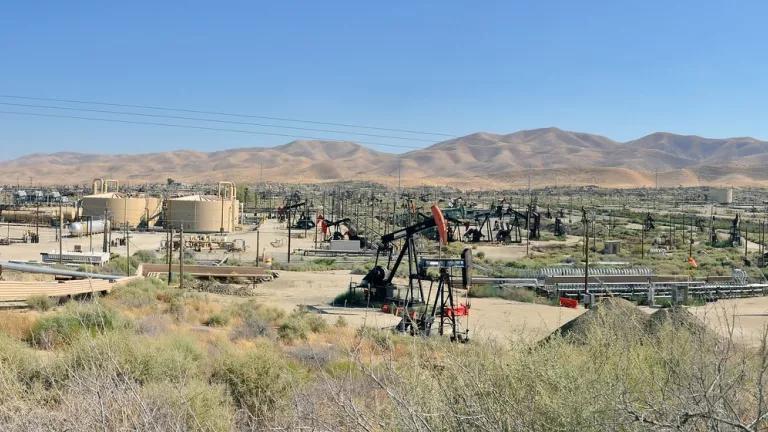
It’s bad enough that the Trump Administration is trying to force more fracking down the throats of Californians with its Bureau of Land Management (BLM) plans to open up large swaths of federal land to oil development. But now, we are being deprived even of our right to meaningfully express opposition.
On May 9 (a month after issuance of its draft Southern California fracking plan), BLM unveiled a final proposal for the Central Coast region that would open up massively more land to oil development than its draft proposal—the one the public actually had an opportunity to comment on—would have. This unwelcome surprise package dumped on California’s doorstep was accompanied by a note explaining that the plan is needed to further the President’s agenda of squeezing maximal oil out of your public lands. (If that metaphor is giving any of you other children of the 70s flashbacks to an infamous prank of our misspent youth, you’re not alone. Or particularly off base.)
In January 2017, after being ordered by a court to go back and specifically consider fracking impacts before making a decision whether to lease federal lands for oil production, BLM issued in draft an amendment to its Central Coast region Resource Management Plan (RMP) and associated environmental impact statement—having agreed to do an amendment of some kind following the court order. In issuing the draft, as required by law, BLM laid out alternative options for (among other things) the number of acres that would be opened up to oil development. One of these was the “no action” alternative, which is always included in environmental impact statements as a baseline—it’s the business as usual scenario. This no-action Alternative A would have left 683,800 acres open to exploitation by leaving the RMP unamended. The remaining four action alternatives, B through E, all would have opened up much less acreage to fracking—ranging from 39,000 acres to 487,000 acres. BLM identified Alternative C as its preferred alternative, which would open up a little more than half of what Alternative A would leave open.
Public commenters on this proposal, naturally, commented on the action alternatives—because BLM had specified a preference for an action alternative, the entire point of this exercise was to take into account fracking impacts as a basis for amending the RMP to open up less land for fracking—wasn’t it?
Or so you would think, until BLM pulled off its bait and switch. The final version of the environmental review issued in May announced that BLM has created and is now preferring a newly-minted Alternative F, which would open up almost exactly the same acreage (with only a small smattering of additional protections) as the no action alternative—the alternative everyone had pretty much ignored in comments because there was no reason to think it was actually on the table.
BLM helpfully explained that “Alternative F was selected as the Preferred Alternative based on the Administration’s goal of strengthening energy independence and the BLM support of an all-of-the-above energy plan that includes oil and gas underlying America’s public lands.” And just to make sure we all completely understand in whose interest they’re working, BLM notes a few lines down that it is “reviewing and streamlining its business processes to serve its customers and the public better and faster.” As in, the actual “customers”—the ones BLM serves and aims to please—are the industries it’s supposed to be regulating, as distinct from the public. At least you can’t accuse the Bureau of hiding its loyalties.
NRDC and others have pushed back against the new “drill baby drill” alternative by filing formal protests explaining our concern, which BLM will have to respond to in writing. Because when it comes to managing our public lands, the law doesn’t like surprises, and neither do we.

